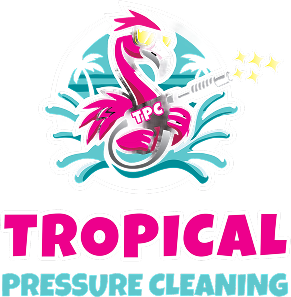The Tropical Guide to Caring for Artificial Turf in Florida
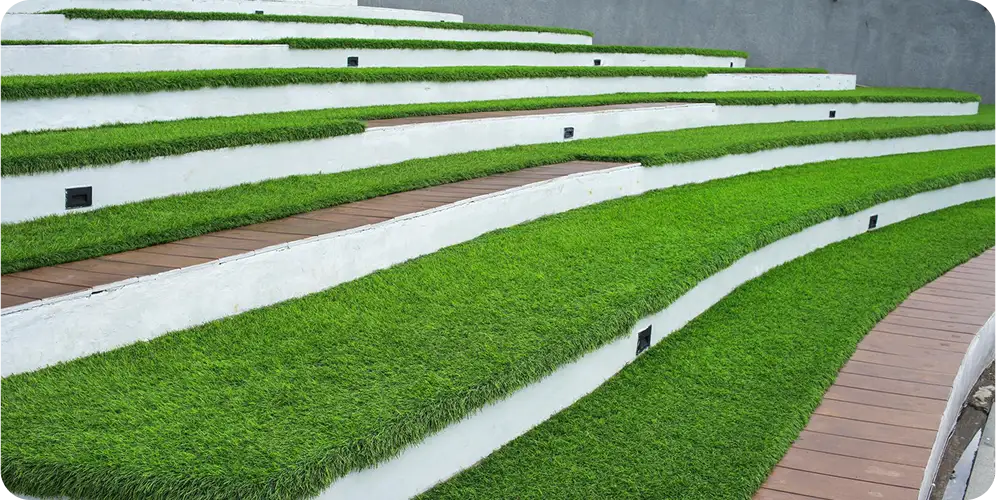
Florida homeowners are increasingly turning to artificial turf as a practical and attractive alternative to natural lawns. The state’s tropical climate, with intense sun, high humidity, and heavy rainfall, makes maintaining natural grass a constant challenge. Lawns often struggle with brown patches, pests, and overgrowth, while artificial turf offers a consistently green, low-maintenance solution. For homeowners looking to keep their outdoor spaces spotless, Tropical Pressure Cleaning provides fast, friendly, and professional exterior cleaning services that complement artificial turf and other landscaping features, using eco-friendly soft-wash techniques that remove dirt, mold, and grime without damaging surfaces. This guide is designed to help homeowners navigate Florida’s unique conditions, offering insights on choosing the right turf, maintaining it, and optimizing outdoor spaces for long-lasting beauty and durability.
Artificial Grass vs. Natural Grass
When deciding between artificial and natural grass in Florida, homeowners must consider durability, maintenance, and overall cost. Artificial grass is designed to withstand heavy foot traffic, intense sun, and frequent rainfall without losing its lush appearance. Natural grass, on the other hand, requires constant care to stay healthy, especially in tropical climates where heat stress and humidity can take a toll.
Benefits of artificial grass include:
- Low water usage, which reduces utility bills and conserves resources
- No mowing, fertilizing, or pesticide applications required
- Consistently green appearance year-round regardless of weather conditions
Challenges of natural grass include:
- Frequent watering to prevent brown patches and maintain growth
- Susceptibility to pests and diseases common in humid environments
- Vulnerability to heat stress, which can damage lawns during Florida’s hot summer months
Overall, artificial grass provides a durable, low-maintenance alternative that can thrive in Florida’s unique climate while offering homeowners a pristine lawn without the ongoing effort required for natural grass.

Understanding Artificial Turf
Artificial turf is a synthetic alternative to natural grass, designed to provide a lush, green lawn without the maintenance challenges of soil-based lawns. It is made from durable synthetic fibers that replicate the look and feel of grass, supported by a backing material that provides stability, drainage, and longevity. Modern artificial turf is engineered to withstand heavy use, Florida’s intense sun, and frequent rainfall, making it a practical solution for both residential and commercial spaces.
Types of artificial turf include:
- Residential turf, which is softer and more comfortable for family use and pets
- Commercial turf, designed for high-traffic areas such as playgrounds, sports fields, and public spaces
- Specialty turf options that balance aesthetics, durability, and specific functional needs
Artificial turf mimics natural grass through a combination of blade shape, color variation, and texture. Some products feature multi-tone fibers that create a realistic appearance, while others incorporate thatch layers to provide natural cushioning. With these design features, artificial turf can offer the visual appeal of a traditional lawn while reducing the time, effort, and cost associated with maintaining natural grass.
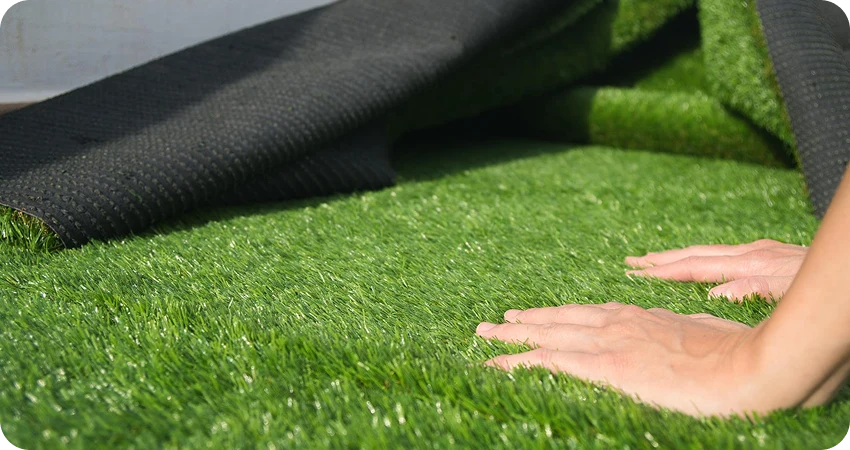
Grass Blades: Structure and Care
The quality of synthetic grass blades is a key factor in the appearance, durability, and comfort of an artificial lawn. High-quality blades are designed to withstand Florida’s intense sun and heavy use while maintaining their color and shape over time. Choosing the right blades ensures a longer-lasting lawn that continues to look natural and inviting.
Factors affecting blade performance include:
- Height: Taller blades create a more lush, natural appearance but may require more frequent brushing to stay upright.
- Thickness: Thicker blades are more durable and resistant to flattening, providing a soft, resilient surface for walking and playing.
- Material: UV-resistant materials prevent fading from sun exposure and maintain flexibility under heat.
Tips for maintaining grass blades:
- Regularly brush blades using a stiff-bristled broom or power brush to keep them upright and evenly distributed.
- Rinse occasionally with water to remove dust, pollen, or debris that can weigh blades down.
- Inspect for flattened or damaged areas and adjust infill as needed to restore support and structure.
Proper care of grass blades preserves both the aesthetic appeal and functional comfort of an artificial lawn, ensuring it remains a vibrant and enjoyable outdoor space.
Artificial Turf Installation in Florida
Proper installation is essential for ensuring the longevity and performance of artificial turf in Florida. A well-installed lawn not only looks natural but also drains efficiently and withstands the challenges of the tropical climate. The installation process begins with thorough base preparation, followed by careful attention to drainage, turf laying, and secure anchoring to prevent shifting or uneven surfaces.
Key steps for installation include:
- Base preparation: Remove existing grass, debris, and rocks, then compact and level the soil to create a stable foundation.
- Drainage: Install a layer of crushed stone or gravel to ensure water flows away quickly, preventing pooling and mold growth.
- Turf laying: Roll out the turf, trim edges, and align seams to create a smooth, continuous surface.
- Securing: Use stakes, nails, or adhesive to anchor the turf firmly in place, ensuring it remains stable under foot traffic.
Choosing between professional and DIY installation is important. Professional installers bring expertise, tools, and experience to handle grading, drainage, and seam alignment, which can prevent costly mistakes. DIY installation may save money upfront but requires careful planning, proper tools, and a thorough understanding of installation techniques.
In Florida’s tropical climate, additional considerations include:
- Heavy rain that demands efficient drainage to prevent water accumulation
- Intense sun that can heat the surface, making UV-resistant blades and infill materials essential
- Sand-based or rubber infill to add stability, cushioning, and natural appearance while aiding in cooling
A properly installed artificial lawn ensures durability, comfort, and a natural look that can withstand Florida’s challenging weather conditions.
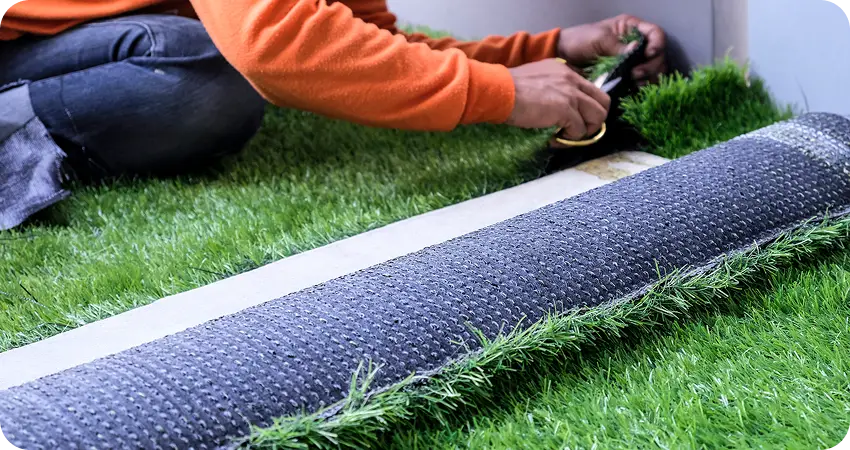
Artificial Lawn Maintenance
Maintaining an artificial lawn in Florida requires regular attention to keep it looking fresh, safe, and durable. Despite being low-maintenance compared to natural grass, artificial turf benefits from consistent care to prevent debris buildup, flattening of blades, and other issues caused by the humid climate.
Regular maintenance routines include:
- Brushing: Use a stiff-bristled broom or power brush to keep blades upright and evenly distributed.
- Rinsing: Hose down the lawn periodically to remove dust, pollen, and pet waste.
- Debris removal: Clear leaves, twigs, and other organic matter to prevent mold growth and maintain a clean appearance.
Preventing mold, mildew, and odor is especially important in Florida’s humid weather. Ensure proper drainage, avoid standing water, and clean spills promptly. Using a mild detergent or specialized artificial turf cleaner can help control odor and inhibit microbial growth.
Seasonal care tips include:
- Inspect and adjust infill levels during wet seasons to maintain support and cushioning.
- Apply UV protectant sprays in the summer to reduce fading from intense sunlight.
- Remove fallen leaves and organic debris frequently during the rainy season to prevent staining and mold buildup.
Consistent maintenance preserves the beauty, comfort, and longevity of an artificial lawn, allowing homeowners to enjoy a vibrant, hassle-free outdoor space year-round.
Heat Resistance of Artificial Turf
Artificial turf can become hot under Florida’s intense sun, and understanding how synthetic materials react to high temperatures is crucial for both comfort and safety. Most modern artificial turf is made from heat-resistant polymers, but direct sunlight can still raise surface temperatures significantly, especially during summer afternoons. Knowing how to manage heat ensures the lawn remains enjoyable for family activities and pets.
Strategies to reduce heat include:
- Watering: Lightly hosing down the turf can cool the surface and make it more comfortable for walking or play.
- Cooling infill: Using sand or specially designed cooling infill materials can help reduce surface heat.
- Choosing heat-resistant blades: Select turf products specifically engineered to withstand high temperatures without losing color or flexibility.
Safety considerations are important for pets and children who may come into contact with hot surfaces. Avoid prolonged exposure during peak sun hours, provide shaded areas, and monitor for signs of discomfort. By combining heat-resistant materials with proper cooling strategies, homeowners can maintain a safe and pleasant artificial lawn even in Florida’s tropical climate.
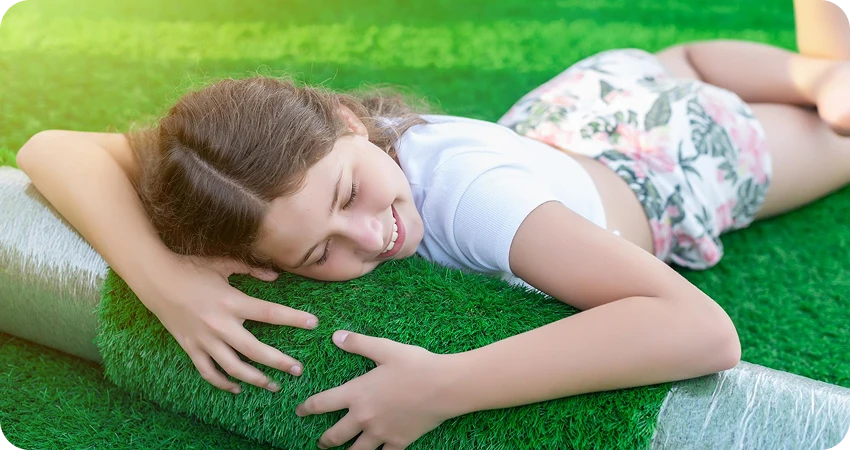
Environmentally Friendly Benefits
Artificial turf offers several environmentally friendly benefits, making it an attractive option for Florida homeowners looking to reduce their ecological footprint. One of the most significant advantages is water conservation. Unlike natural lawns that require frequent watering, artificial turf remains green and healthy without any irrigation, helping to save thousands of gallons of water each year.
Additional environmental benefits include:
- Reduced chemical use: Artificial lawns do not require pesticides, herbicides, or fertilizers, which helps prevent harmful chemicals from entering the soil and local waterways.
- Lower emissions: Eliminating the need for lawn mowers and other gas-powered equipment reduces greenhouse gas emissions and noise pollution.
- Recycling and sustainability: Many artificial turf products are made from recyclable materials, and some companies offer recycling programs for old turf, promoting sustainable lifecycle practices.
By choosing artificial turf, homeowners can enjoy a beautiful, low-maintenance lawn while supporting water conservation, reducing chemical exposure, and contributing to a more sustainable environment.
Infill Application and Care
Infill plays a crucial role in the performance and longevity of an artificial lawn. It provides stability for the turf, cushions foot traffic, and helps with proper drainage, ensuring that the lawn remains safe, comfortable, and visually appealing. Without adequate infill, artificial turf can become uneven, compacted, or less durable over time.
Types of infill materials include:
- Sand: Often used for stability and to help blades stand upright, providing a natural look and firm surface.
- Rubber: Adds cushioning for playgrounds, sports fields, or areas with heavy foot traffic, enhancing safety.
- Organic alternatives: Options such as cork or coconut fiber are environmentally friendly and help reduce surface heat.
Maintaining infill involves:
- Regularly brushing the turf to redistribute infill evenly across the surface.
- Adding additional infill as needed to prevent low spots or uneven areas.
- Checking for compaction, especially in high-traffic zones, and loosening or topping up infill to maintain proper support and drainage.
Proper infill application and ongoing care ensure that an artificial lawn remains comfortable, durable, and visually appealing for years, even under Florida’s tropical conditions.
Artificial turf provides Florida homeowners with a durable, low-maintenance, and environmentally friendly alternative to natural grass, staying green year-round despite heat, humidity, and heavy rainfall. Proper care, including brushing, rinsing, debris removal, and infill management, helps preserve its appearance, comfort, and longevity. Tropical Pressure Cleaning can complement turf maintenance by safely and effectively cleaning surrounding patios, pavers, pool decks, and other exterior surfaces, ensuring the entire outdoor space looks pristine. By evaluating lawn needs and selecting the right turf, homeowners can enjoy a beautiful, functional, and eco-friendly outdoor space that lasts for years.
Recent Blog
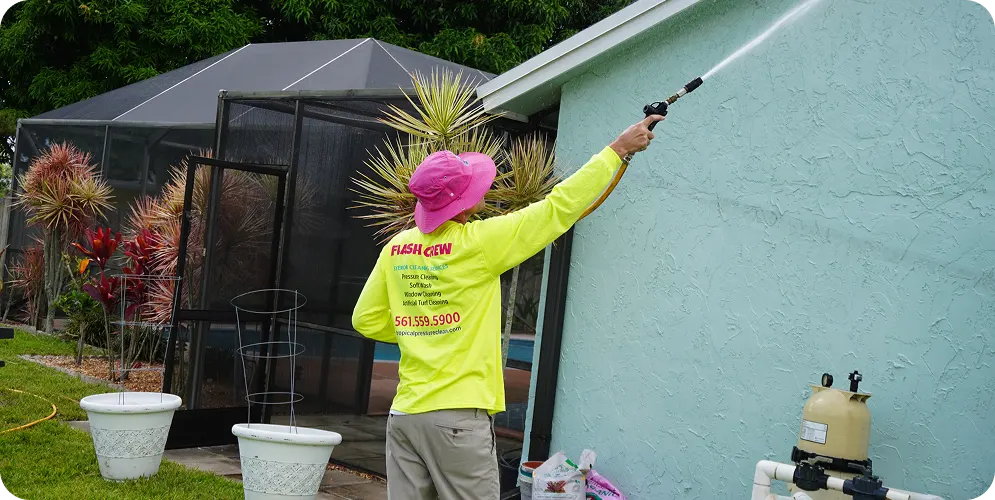
Soft Wash vs Pressure Wash: Which is Better for Your Home’s Exterior?
Soft Wash vs Pressure Wash: Which is Better for Your Home’s Exterior?Keeping your home’s exterior clean is essential not only for curb appeal but also for long-term maintenance and protection. Over time, dirt, mold, algae, and other buildup can dull surfaces and cause...
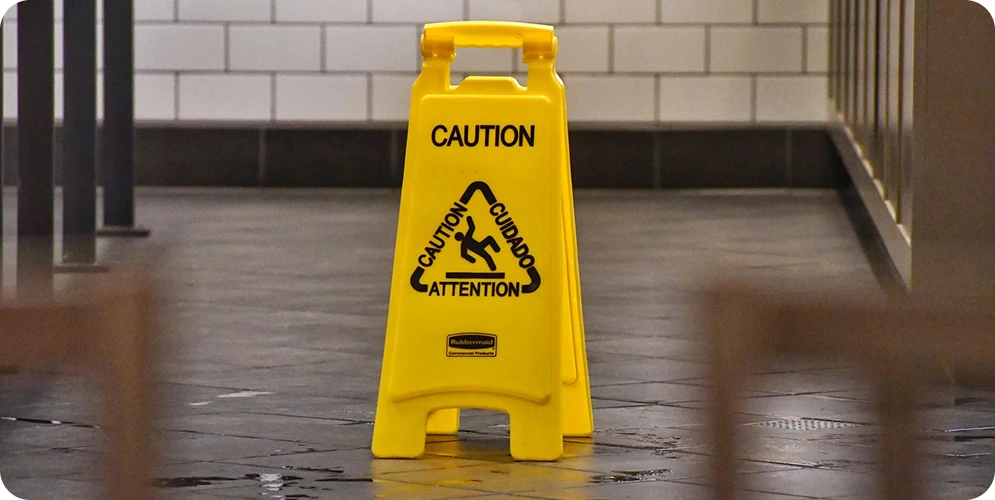
How to Prevent Slippery Sidewalks and Lawsuits at Your Business
How to Prevent Slippery Sidewalks and Lawsuits at Your BusinessSlippery sidewalks pose a serious risk for businesses, creating hazards that can lead to accidents and costly legal claims. When customers, employees, or visitors encounter unsafe walking conditions, the...
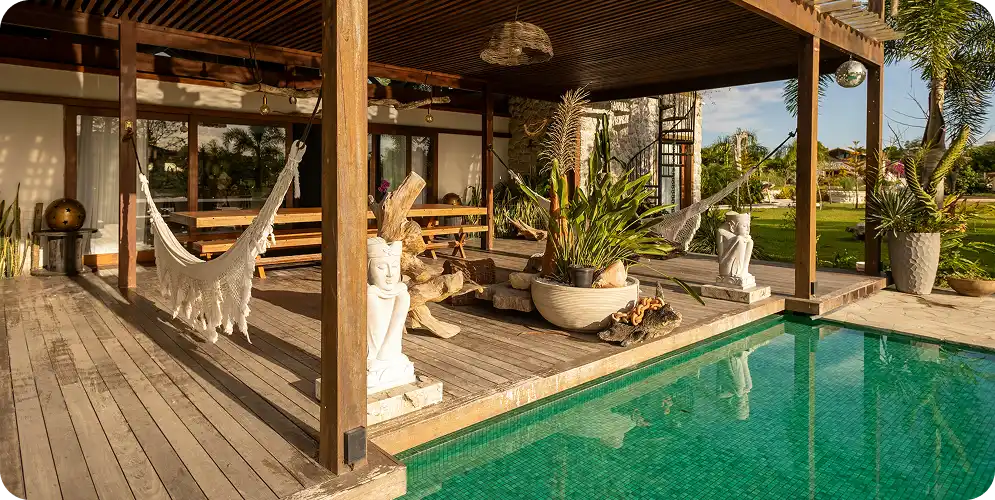
Pool Party Ready: Why Your Pool Deck Needs a Pre-Season Deep Clean
Pool Party Ready: Why Your Pool Deck Needs a Pre-Season Deep CleanSummer is the perfect time for backyard gatherings, and nothing sets the scene like a sparkling, well-maintained pool. Preparing your pool for the season is about more than just filling it with water; a...
Request a Free Quote
Ready to Shine? Get Your Free Quote in a Flash!
Fill out our easy-breezy form and Flash will get back to you faster than a summer storm!
Prefer the old-school way?
Call us at 561.559.6700
